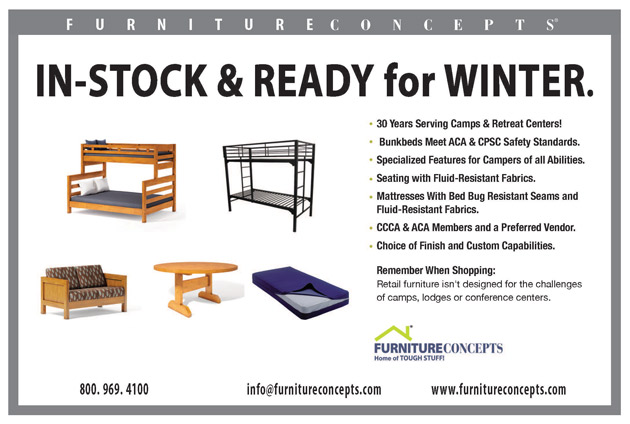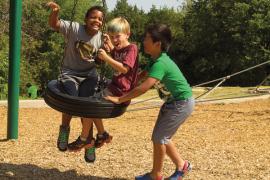It’s a pandemic. No one knows enough.
They say it may last 12–18 months. Maybe longer.
Information changes day-to-day. Sometimes more frequently.
There’s a pediatric complication that wasn’t anticipated.
COVID-19 changed camp plans — but will the change last forever?
Our economic viability is threatened.
. . . I just want to know what I should do.
These statements and others echo among camp professionals as we continue to grapple with making decisions about our camp programs. Spring programs were abandoned long ago and, for some, so too were summer sessions. The angst of trying to make a good decision, one tempered by social responsibility and concern for the health of campers and staff, is made more challenging by the economics of the decision. For some, a “go, no-go, maybe go” decision might mean the camp ceases to exist. For others, the decision crimps years of client nurturing; will campers and their families come back if camp doesn’t happen again next summer? It also touched staff, especially those in leadership positions. Might they find work elsewhere, thus risking their return when — if — camp operates in 2021?
Negotiating uncertainty, a significant component of the COVID-19 pandemic, is stretching our coping process and the energy needed to respond. While some camp professionals may be doing all right, others struggle, often significantly. There’s precious little evidence to guide decision-making, yet decisions must be made. Campers want to know; so do their parents. Staff, especially returning people, are waiting to make plans. Supplies are needed, but given the vulnerability of supply chains, will they be available? Other stakeholders — from insurance carriers to the post office — are also interested in camps’ decisions. Whether open, closed, or providing a hybrid camp experience in 2021, running a camp has changed as a result of COVID-19 experiences.
Given the variation in information and its lack of predictability, what parameters are camp professionals using to make decisions in such an unsettled, changeable environment? One consistent theme is that camp professionals consider a host of factors before making their “go, no-go, maybe go” decision. Here are some of those considerations with emphasis on the fact that there isn’t one right response. Camps vary too much; we attract different clients, we’re in different geographic areas with varying supports, and our programs are different. But everyone seems to consider the following:
- The recovery phase of the camp’s geographic location as well as the communities from which the camp draws its campers and staff. Phased recovery is designed to facilitate a gradual return to normal (whatever normal might be) while keeping the COVID-19 curve from overwhelming medical supports and protecting vulnerable people until a vaccine and appropriate treatment are developed and available. In addition, CDC and other advisory resources advise that camp not open until the camp community can function in the second or third recovery phase.
- The risk tolerance of parents who might give their child a camp experience. Some parents are more risk-averse than others. In addition, parents need to understand that a given camp might be able to minimize COVID-19 risks, but we can’t eliminate it. The risk of exposure exists — until the group is appropriately immunized and/or herd immunity is developed (we currently think). That timeline stretches, at minimum, into Spring 2021.
- The camp’s ability to list the health concerns that eliminate some campers and staff. Parent policies ought to describe or list the kind of health concerns that indicate a given child should not participate in camp and direct parents of these children to consult the child’s physician for clearance (permission) to attend. Document this medical permission and provide the medical professional with the name/contact info of a camp professional who can answer questions associated with making this determination. The same applies to staff. Using staff recruitment materials, remind staff to consider their personal health status, especially if they have a health concern that impacts their response to COVID-19, in a way that’s sensitive to state employment regulations.
- The reliability of critical camp supplies, such as access to food, adequate personal protective equipment (PPE), and a medical community capable of responding to COVID-19 needs. This consideration includes assessing redundancies built into the supply chain of camp providers.
- The capacity to provide a menu of camp experiences. Summer 2020 demonstrated a variety of options for both staying in touch with campers and staff as well as ways to provide programming. Often delivered using technology, what a given camp provided depended on the capacity (time and skills) of camp staff. Aspects of this may be worth contemplating for 2021, especially as families consider their willingness to reengage with the camp experience. Providing a menu of camp options, options that go beyond session dates, may also bridge a camp into its tomorrow by engaging participants year-round, thus keeping them connected to camp.
- The need for additional revenue streams. While providing an in-person camp experience remains most desirable, shoring up the camp’s revenue stream with additional programs and services seems a wise consideration. Ideas for expanded revenue gleaned from the past summer include renting cabins for family groups, providing day programming for local, working (essential employee) parents, selling baked goods from the kitchen, and collaborating with local community education to deliver courses that use camp facilities.
COVID-19 is a living laboratory. It has challenged our classic perception of the camp experience and given us opportunity to think outside our proverbial box. From a health perspective, however, it has also taxed camp professionals. Coping with stress is wearing whether the stressor is good or bad. Our behaviors often signal this:
- We don’t sleep well.
- Our eating pattern is disrupted.
- We become less patient and more short-tempered.
- We find it more difficult to marshal energy for doing things, including things that used to be quite enjoyable.
Self-care is important. Indeed, it’s critical if some of those behaviors that signal diminished coping have already presented in your life. Some camp professionals talk about how the lack of summer’s fray meant they had time to attend to their own needs. If anything, perhaps our COVID-19 experience, no matter how one responded to it, has taught us the value of self-care. We are professionals accustomed to helping others, accustomed to “the buck stops here” problem-solving, and often working ourselves with little sleep and compromised nutrition. COVID-19 may have changed that dynamic as day-to-day pressures dropped off and allowed time for occasional walks in the natural environment, eating a meal without interruption, or becoming reacquainted with silence.
Yes, 2020 certainly had its stress-filled moments, but we’ve got to acknowledge the flip side of that. It also provided opportunity for novel ideas and discovery of experiences that may never have surfaced otherwise. As a result, 2020 might be deemed a “gap year,” a time when business as usual gave way to the unexpected, removed some control, and provided time to discover different ways of doing camp.
This year’s experience made us more aware of what it means to have a healthy camp and presented a myriad of options for achieving that goal. Indeed, consideration of those options will extend into 2021. For example:
- Assuming a COVID-19 vaccine becomes available, revisit your camp’s immunization policy. Might it need revision?
- Does your communicable disease plan need attention? An updated 2020 white paper on that topic is available on the Association of Camp Nursing’s (ACN) website (campnurse.org).
- Are changes needed to opening day’s health screening, or are adaptations needed to how campers and staff are grouped, especially when in close proximity to others (e.g., dining room; cabin living; large group games)?
- Perhaps the health center’s medical protocols need revision so people presenting with suspicious symptoms are more quickly isolated.
- Do protective behaviors like handwashing and cough/sneeze etiquette need institutionalizing via supervisory oversight so outbreak potentials are minimized?
Audit these and other strategies for your camp now. Make needed changes so you step into 2021 in a strong position, one poised for whatever happens. Collaborate with others — parents, staff, campers, medical professionals — so your camp is a healthy experience for everyone. Remember, we’re in this together. A healthy camp experience need not rest solely on the camp professional’s shoulders. Invite others to participate in the quest too. Then take another deep breath for yourself.


